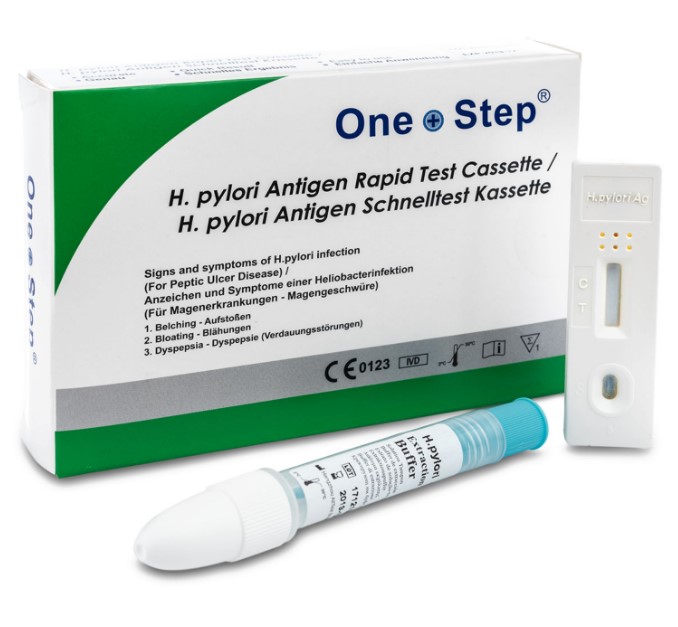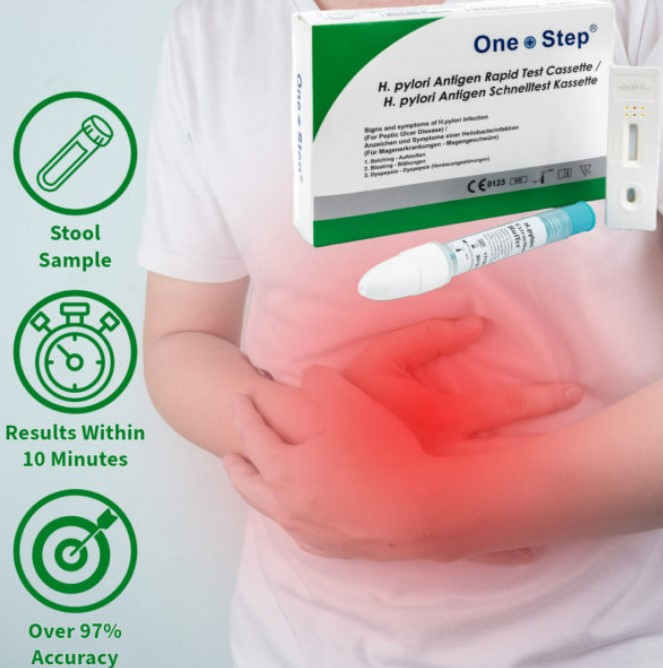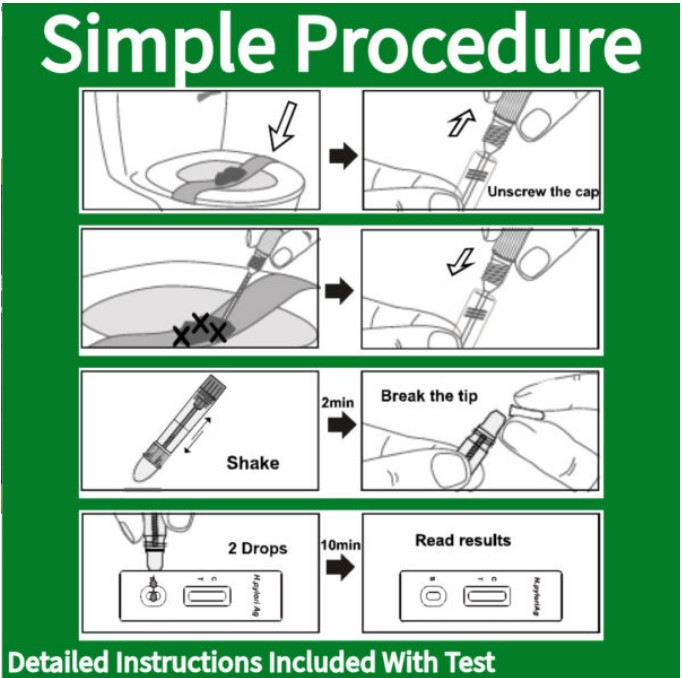Gastro Intestinal
H Pylori Testing Kit
Quantity:
In Stock
Price:£
9.99
What is Helicobacter pylori and how does it relate to stomach ulcers?
Helicobacter pylori (H. pylori) is a prevalent bacterium infecting approximately half of the global population, often without causing symptoms. It is responsible for conditions like gastritis and stomach ulcers. Despite its widespread occurrence, there's currently no vaccine against it, affecting both children and adults. However, targeted medications, such as antibiotics, can effectively eradicate the bacterium.
The stomach and duodenum are shielded from stomach acid by a protective lining. Disruption of this defense mechanism can lead to damage of the stomach's mucous membrane, resulting in ulcers. H. pylori infection is a common cause of such disruption and also elevates the risk of stomach cancer.
Treatment typically involves a combination of antibiotics and antacids, resulting in successful eradication of H. pylori and subsequent resolution of gastritis.
How does the H. pylori test function?
H. pylori is a small, spiral-shaped bacterium residing on the surface of the stomach and duodenum. The H. pylori Test detects specific antigens in fecal matter to determine the presence of the bacterium.
Why is this test necessary?
A commonly used method for detecting H. pylori infection is a serological test, which identifies antibodies in the blood of infected individuals. However, a limitation of this test is its inability to differentiate between current and past infections, as antibodies may persist in the serum long after the organism has been eradicated.
Stool antigen testing for H. pylori is increasingly preferred for diagnosis and monitoring treatment efficacy. Studies have shown that over 90% of patients with duodenal ulcers and 80% with gastric ulcers are infected with H. pylori.
When should the test be conducted?
The test can be performed at any time of the day, particularly when recurrent stomach and intestinal issues like GERD and gastritis are present.
Pack Contents:
1x Test Cassette , 1x Specimen collection tube with extraction buffer, 1x Stool collection paper, 1x Instructions for use
How is this test carried out:
1. Wash your hands with soap and rinse with clear water.
2. To collect faecal specimens:
The stool specimen should be collected in the stool collection paper, avoiding contamination of the specimen by taking precautions that the specimen or the side of the paper containing specimen does not come in contact with any contaminating objects including toilet cleaners. Please read the instructions on the collection paper for how to collect your specimen. Alternatively, you can use a clean specimen container, but again must make sure that neither the specimen nor the cup come into contact with any contaminating objects.
3. To process faecal specimens:
Unscrew the blue cap of the specimen collection tube with extraction buffer, then randomly stab the specimen collection applicator into the faecal specimen in at least 3 different sites. Do not scoop the faecal specimen.
Re-fasten the blue cap onto the specimen collection tube, then shake the specimen collection tube vigorously to mix the specimen and the extraction buffer.
4. Bring the pouch to room temperature before opening it. Remove the test cassette from the foil pouch and use it as soon as possible. Best results will be obtained if the test is performed immediately after opening the foil pouch.
5. Open the white cap of the specimen collection tube with extraction buffer and then break off the tip. Invert the specimen collection tube and transfer 2 full drops of the extracted specimen to the specimen well (S) of the test cassette, then start the timer. Avoid trapping air bubbles in the specimen well (S).
6. Read results at 10 minutes. Results obtained after this time may be inaccurate.



